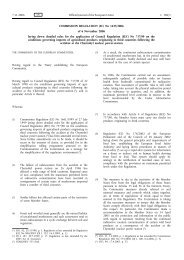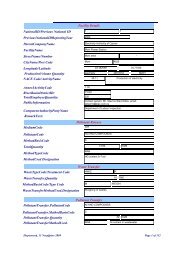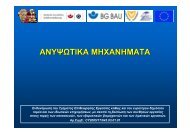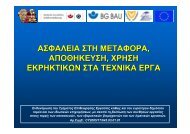Non binding guide to good practice for implementing Directive
Non binding guide to good practice for implementing Directive
Non binding guide to good practice for implementing Directive
- No tags were found...
Create successful ePaper yourself
Turn your PDF publications into a flip-book with our unique Google optimized e-Paper software.
CHAPTER 3 AVOIDING OR REDUCING EXPOSURETo control exposure we must have a strategy that can effectively deliver reducedexposures <strong>to</strong> whole-body vibration.In this chapter welook at the process of developing a control strategy, including how<strong>to</strong> prioritise your control activities.3.1 DEVELOPING A CONTROL STRATEGYA risk assessment should enable methods <strong>for</strong> controllingexposure <strong>to</strong> be identifi ed. While you are assessing thevibration exposures, you should be thinking about thework processes that cause them. Understanding whyworkers are exposed <strong>to</strong> high vibrations and ergonomicrisks will help identify methods <strong>for</strong> reducing or eliminatingthe risks.The important stages in this management process are:You may also need <strong>to</strong> adapt your controls <strong>for</strong> workerswho are at particular risk of injury, e.g. those workerswho are more susceptible <strong>to</strong> vibration injury and showsigns of developing injury at exposures below theexposure action value.The Framework <strong>Directive</strong> provides the followinghierarchy <strong>for</strong> <strong>implementing</strong> a programme ofpreventative measures:PART II Guide <strong>to</strong> <strong>good</strong> <strong>practice</strong> on Whole-Body Vibration – CHAPTER 3 AVOIDING OR REDUCING EXPOSURE• identifying the main sources of vibration;• identifying the main sources of shock vibration;• ranking them in terms of their contribution <strong>to</strong> theexposure;• identifying and evaluating potential solutions interms of practicability and cost;• establishing targets which can be realisticallyachieved;• allocating priorities and establishing an ‘actionprogramme’;• defi ning management responsibilities and allocatingadequate resources;• <strong>implementing</strong> the programme;• moni<strong>to</strong>ring progress;• evaluating the programme.The approach you take <strong>to</strong> reduce risks from wholebodyvibration will depend on the practical aspects ofyour particular processes and on the current levels ofexposure.(a) avoiding risks;(b) evaluating the risks which cannot be avoided;(c) combating the risks at source;(d) adapting the work <strong>to</strong> the individual, especiallyas regards the design of work places, thechoice of work equipment and the choice ofworking and production methods, with a view,in particular, <strong>to</strong> alleviating mono<strong>to</strong>nous workand work at a predetermined work-rate and <strong>to</strong>reducing their effect on health;(e) adapting <strong>to</strong> technical progress;(f) replacing the dangerous by the non-dangerousor the less dangerous;(g) developing a coherent overall prevention policywhich covers technology, organization of work,working conditions, social relationships andthe infl uence of fac<strong>to</strong>rs related <strong>to</strong> the workingenvironment;(h) giving collective protective measures priorityover individual protective measures;(i) giving appropriate instructions <strong>to</strong> the workers.75


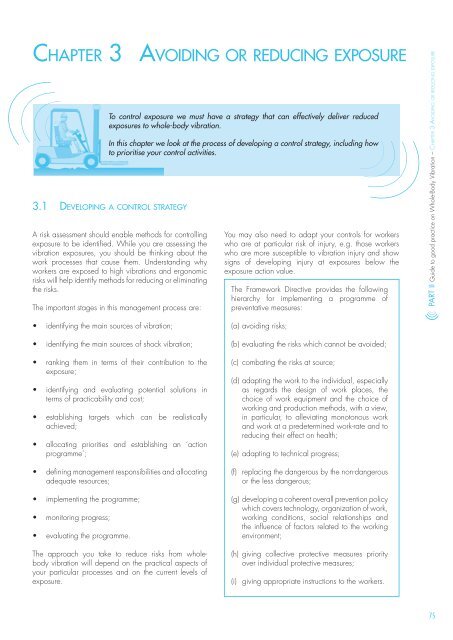


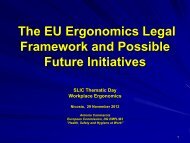
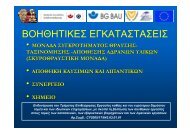
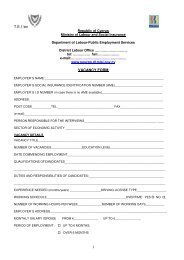
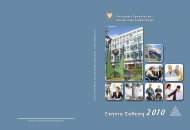
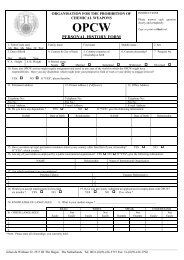
![Hadjimichael[1].pdf](https://img.yumpu.com/33937965/1/190x135/hadjimichael1pdf.jpg?quality=85)

